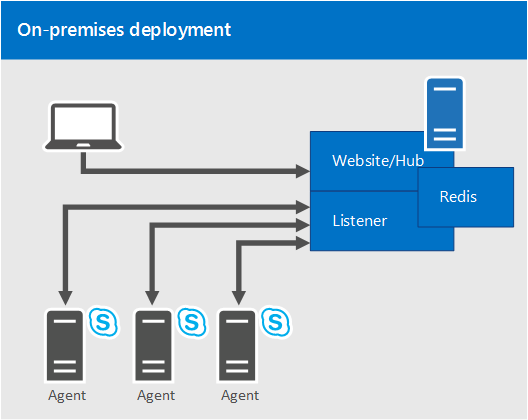

After the Skype for Business Server Deployment Wizard has defined the location of the file share, Skype for Business Server creates a folder structure within the file share similar to: Skype for Business Server supports using file shares on either direct attached storage (DAS) or a storage area network (SAN), including Distributed File System (DFS), and on a redundant array of independent disks (RAID) for file stores. The web conferencing service encrypts the content before it stores the content in the file store. For more information, see Create a file share in Skype for Business Server. You can use an existing file share for the file store, or you can specify a new file share by specifying the fully qualified domain name (FQDN) of the file server on which the file share is to be located and a folder name for the new file share. As part of deployment, you must specify a file share to be used as the file store for the Standard Edition server or Enterprise Edition Front End pool. The Skype for Business Server web conferencing service stores content shared during meetings in the file store. Integration with Office Web Apps Server, which is necessary in order to share PowerPoint files during a conference. If you have chosen to enable web conferencing, you need to plan for the following:Īccess to the file store, which is used for storing web conferencing content. For details about these requirements, see Server requirements for Skype for Business Server 2015 and Environmental requirements for Skype for Business Server 2015 or Server requirements for Skype for Business Server 2019.
#MINIMUM SYSTEM REQUIREMENTS FOR SKYPE FOR BUSINESS SOFTWARE#
Hardware and software requirements for Front End Serversīecause web conferencing, A/V conferencing, dial-in conferencing, and IM conferencing are all collocated with the Front End Server, the server hardware and software requirements are the same as for the Front End Servers.

If you want to allow external users to participate in conferences, you'll need to deploy an Edge Server.Ĭonferencing capabilities and requirementsįor more information about topology considerations, see Plan your conferencing topology for Skype for Business Server. If you want to allow web conferencing, you'll need to ensure Skype for Business Server can connect to an Office Web Apps Server. All conferencing capabilities run on Front End Servers there are additional requirements for different types of conferencing, as shown in the following diagram.įor example, if you want to allow dial-in conferencing, you'll need to deploy a Mediation Server and a gateway for connecting to the public switched telephone network (PSTN). This section describes the hardware and software requirements for web conferencing, audio and video (A/V) conferencing, dial-in conferencing, and instant messaging (IM) conferencing. Summary: Read this topic to learn about hardware and software requirements for conferencing in Skype for Business Server.


 0 kommentar(er)
0 kommentar(er)
